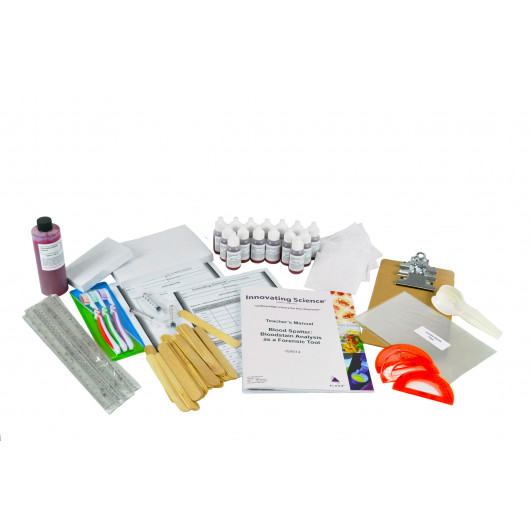

Blood Spatter: Bloodstain Analysis as a Forensic Tool Including Supplemental STEM Activity
It is the job of crime scene investigators to analyze a crime scene and examine/gather various types of evidence that may be used to piece together a possible series of events.
It is the job of crime scene investigators to analyze a crime scene and examine/gather various types of evidence that may be used to piece together a possible series of events. One type of useful evidence, particularly in the case of violent crimes, is blood spatter. An investigator experienced in the analysis of blood spatter can use physical observation as well as mathematical measurement in order to help support or refute possible witness accounts of the crime or, when no witnesses are available, provide insight into events that may or may not have occurred at the crime scene. In this activity students will work through a series of five stations and examine various aspects of blood spatter analysis including the effect of falling height on blood, the appearance of blood that impacts a surface at varying angles, some common blood spatter patterns that may be present at a crime scene, the effect of impact velocity on blood spatter, and the manner in which various surface type/texture may affect the appearance of blood evidence. Kit contains enough materials for 15 groups. Teacher’s Manual and Student Study Guide copymasters are included.
Kit Includes:
- 15 Simulated Spatter Blood, 25mL dropper bottle
- 1 Simulated Spatter Blood, 200mL bottle
- 100 Small Index Cards, 3″ X 5″
- 100 Large Index Cards, 5″ X 8″
- 6 Rulers
- 3 Protractors
- 3 Clipboards
- 3 Dispensers, 3cc
- 30 Tongue Depressors
- 3 Toothbrushes
- 15 Acetate Sheets
- 15 Cloth Squares
Aligned to the Next Generation Science Standards (NGSS)*
Disciplinary Core Ideas: PS2.A; PS3.A; LS1.A; LS3.C; LS3.B
Performance Expectations: MS-PS2-2; HS-PS2-1; HS-PS3-2; HS-LS1-1; HS-LS3-1; HS-LS3-2
Cross Cutting Concepts: Stability and Change; Structure and Function; Cause and Effect; Energy and Matter
Engineering Practices: Planning and Carrying Out Investigations; Constructing Explanations and Designing Solutions; Asking Questions and Defining Problems; Engaging in Argument from Evidence; Analyzing and Interpreting Data; Developing and Using Models
DOT:
Non-regulated
*”Next Generation Science Standards” is a registered trademark of Achieve. Neither Achieve nor the lead states and partners that developed the Next Generation Science Standards was involved in the production of, and does not endorse, this product.

